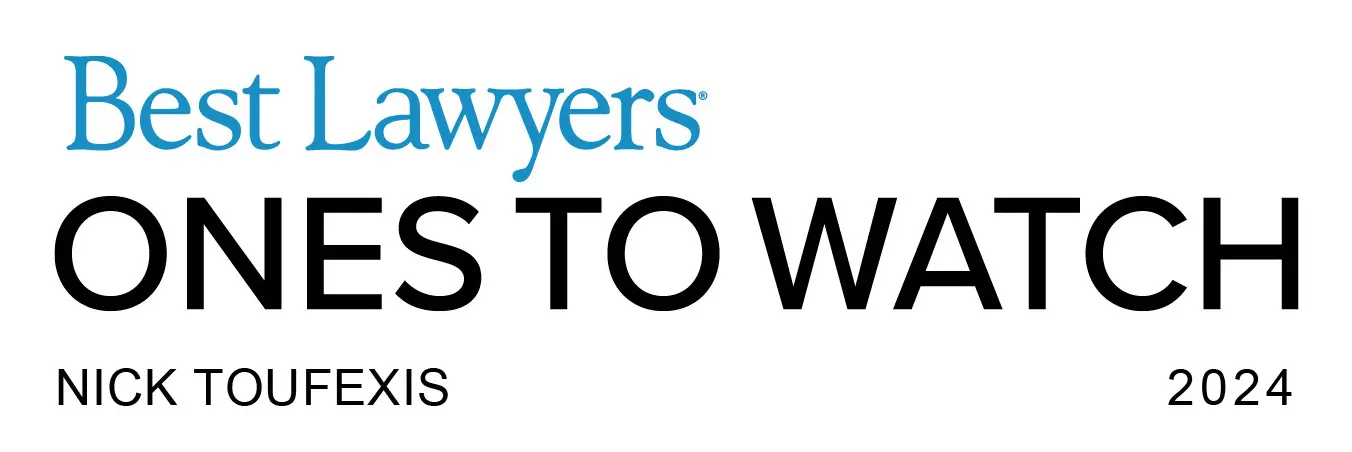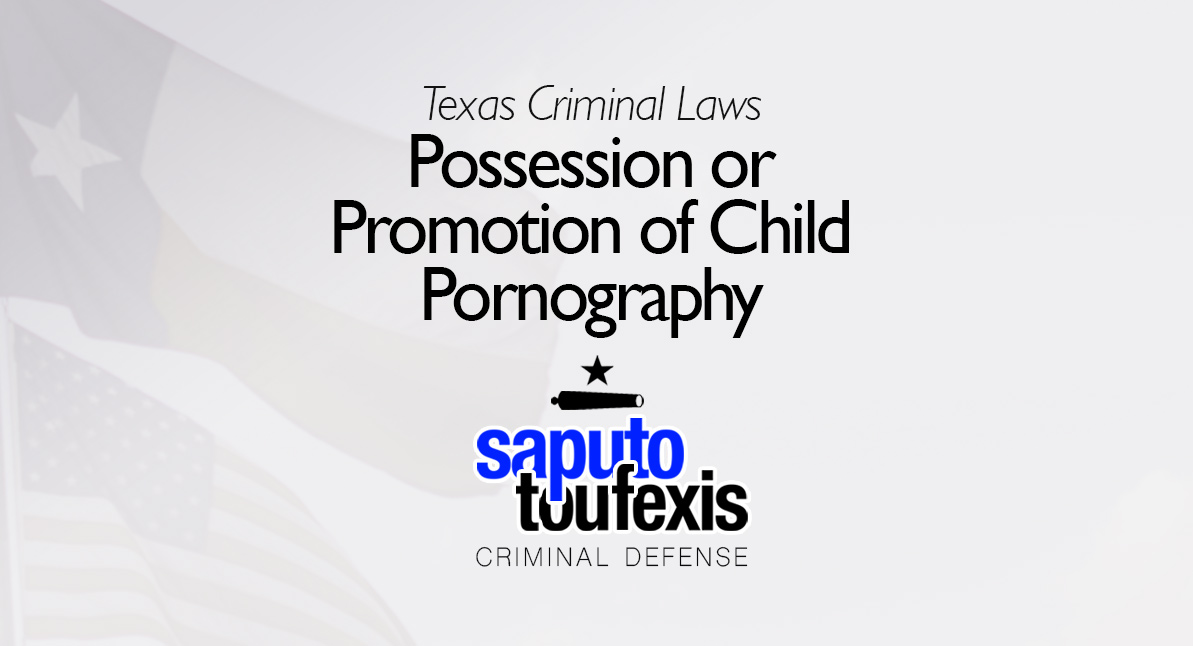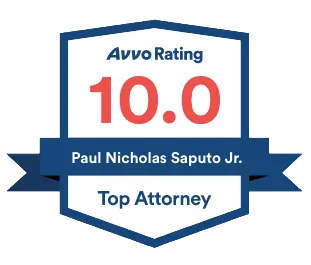The Texas Possession of Child Pornography law and Promotion of Child Pornography law both concern images and video of anyone under 18 years old engaging in “sexual conduct.”
FAQs about the
Possession or Promotion of Child Pornography law in Texas
- What is the current Texas law about child pornography?
- What is “sexual conduct” under Texas Law
- What constitutes a visual depiction of a child?
- In computer forensics, what does it mean to possess the child pornography material?
- What are the affirmative defenses to possession of child pornography?
- How long will I have to register as a sex offender if I am convicted of Possession of Child Pornography?
- What is the statute of limitation for Possession or Promotion of Child Pornography in Texas?
- What is the penalty for a Texas Possession or Promotion of Child Pornography offense?
- Can you get probation for Possession or Promotion of Child Pornography in Texas?
- Do I have to register as a sex offender in Texas if guilty of Possession or Promotion of Child Pornography?
- What level of crime is Possession or Promotion of Child Pornography in Texas?
The Texas legislature codified this criminal offense in Texas Penal Code Section 43.26. The law was updated in 2023, including an expanded definition of the applicable visual materials (which seems to be targeted at deepfake child porn) and additional felony enhancements.
Have you been charged with Possession or Promotion of Child Pornography? Book a consultation to discuss legal representation with attorneys Paul Saputo and Nicholas Toufexis today.
The newer criminal offense of Possession or Promotion of Lewd Visual Material Depicting Child prohibits similar types of visual material, but that law does not require sexual conduct at all.
“Child Porn” offenses are prosecuted in both state and federal courts. In order to be convicted of Possession or Promotion of Child Pornography under state law, the state’s attorney must show that a person: 1) knowingly or intentionally 2) possesses OR accesses with intent to view 3) visual material that the person knows visually depicts a child younger than 18 years of age at the time the image of the child was made who is engaging in sexual conduct.
Child porn cases can involve complicated issues like: Who “possesses” the computer files containing child porn if the computer is shared among many people? Do you really “knowingly and intentionally possess” a computer file that was automatically downloaded by an internet browser? How do you prove the age of an individual when you don’t know who the individual is and can’t contact them?
You can be prosecuted under federal child pornography laws in addition to, or instead of, state law. Federal child pornography laws carry extremely severe penalties. For example, a first time conviction for producing child pornography under 18 U.S.C. § 2251 (Sexual Exploitation of Children) involves fines and a statutory minimum of 15 years to 30 years in prison. Harsher penalties are available if the government can show prior convictions or if the child pornography offense occurred in certain aggravated situations, in which case a convicted person may face up to life imprisonment.
Defending against child porn charges is a complicated task owing to the serious social stigma attached to child pornography cases (people are frequently pre-judged as guilty), complex technology used in the investigations and the confluence of difficult legal concepts in criminal law such as “possession” and the other ones described in the above paragraph.
The Penal Code classifies the Texas Possession or Promotion of Child Pornography law under Title 9 “Offenses Against Public Order and Decency,” Chapter 43 “Public Indecency.” These “public indecency” crimes are sex crimes, but they are not of a violent or assaultive nature. Learn more about the Texas offense of Possession or Promotion of Child Pornography below.
What is the current Texas law about child pornography?
The Texas law against child pornography is separated into two different categories. The first category is called Possession of Child Pornography and is described in subsection (a), while the second category is called Promotion of Child Pornography and is described in subsection (e):[1]
(a) A person commits an offense if:
(1) the person knowingly or intentionally possesses, or knowingly or intentionally accesses with intent to view, visual material that visually depicts a child younger than 18 years of age at the time the image of the child was made who is engaging in sexual conduct, including a child who engages in sexual conduct as a victim of an offense under Section 20A.02(a)(5), (6), (7), or (8); and
(2) the person knows that the material depicts the child as described by Subdivision (1).
(e) A person commits an offense if:
(1) the person knowingly or intentionally promotes or possesses with intent to promote material described by Subsection (a)(1); and
(2) the person knows that the material depicts the child as described by Subsection (a)(1).
Section 43.26(b)(1) specifies that “promote” has the meaning assigned by Section 43.25.[2] The statute also provides a definition for “visual material.”[3]
What is “sexual conduct” under Texas Law
“Sexual Conduct” is defined as “sexual contact, actual or simulated sexual intercourse, deviate sexual intercourse, sexual bestiality, masturbation, sado-masochistic abuse, or lewd exhibition of the genitals, the anus, or any portion of the female breast below the top of the areola.”[4] Note that the definition is not comprehensive because it uses the word “includes” without saying or implying that the list is complete.
“Deviate sexual intercourse” is defined as “any contact between the genitals of one person and the mouth or anus of another person.”[5] “Sexual contact” is defined as “any touching of the anus, breast, or any part of the genitals of another person with intent to arouse or gratify the sexual desire of any person.”[6] Sexual intercourse” is defined as “any penetration of the female sex organ by the male sex organ.”[7]
What constitutes a visual depiction of a child?
In 2023, the Texas legislature added a subsection (i) to this law that specifies that visual material includes depictions of a child “(1) who is recognizable as an actual person by the person’s face, likeness, or other distinguishing characteristic, such as a unique birthmark or other recognizable feature; and (2) whose image as a child younger than 18 years of age was used in creating, adapting, or modifying the visual material, including computer-generated visual material that was created, adapted, or modified using an artificial intelligence application or other computer software.”[8]
In computer forensics, what does it mean to possess the child pornography material?
What it means to “possess” something is a complicated area of law, and it is made even more complicated in the area of computer forensics and digital evidence. Determining whether you possessed a file is a difficult analysis to make, and there are many ways that such a conclusion could be attacked. You should contact us immediately to discuss the specifics of your case. Similarly, whether you “accessed with intent to view” is a difficult and complex notion for the state’s attorneys to prove and is open to attack on many fronts.
What are the affirmative defenses to possession of child pornography?
The child porn statute says that the “affirmative defenses provided by Section 43.25(f)(2) and (3) also apply” as a defense to possession or promotion of child porn under Texas law.[9] Those defenses are as follows:
- (f)(2) the conduct was for a bona fide educational, medical, psychological, psychiatric, judicial, law enforcement, or legislative purpose; or
- (f)(3) the defendant is not more than two years older than the child.
For offenses that occurred prior to September 1, 2023, the law also provided an affirmative defense that “the defendant was the spouse of the child at the time of the offense.”[10]
In addition, the statute provides a defense to prosecution for law enforcement officers and school administrators who possessed or accessed the visual material in good faith solely as a result of an allegation of Electronic Transmission of Certain Visual Material Depicting Minor and allowed other law enforcement or school administrative personnel to possess or access the material only as appropriate based on such an allegation and took reasonable steps to destroy the material within an appropriate period following the allegation.[11]
How long will I have to register as a sex offender if I am convicted of Possession of Child Pornography?
If you plead guilty to Possession of Child Pornography, whether you are convicted or placed on deferred adjudication probation, Texas law generally requires you to register as a sex offender for life. However, the registration period is lower for juvenile offenders,[12] and it is possible that you might be able to terminate the requirement early under the Texas deregistration process. Learn more about the early termination of sex offender registration requirements here
What is the statute of limitation for Possession or Promotion of Child Pornography in Texas?
Possession of Child Pornography and Promotion of Child Pornography both have a seven year limitations period under Texas law.[13]
What is the penalty for a Texas Possession or Promotion of Child Pornography offense?
Possession of Child Pornography, as charged under Subsection (a), is punished as a felony of the third degree, unless one of the enhancements apply.[14] As of September 1, 2023, there are currently two conflicting penalty schemes in the law.
Senate Bill 1527 Penalty Scheme
Under the penalty scheme passed by Senate Bill 1527 in the 88th Legislature, if you have a prior conviction under subsection (a) or, for offenses occuring after September 1, 2023, possessed between 10 and 50 child porn images or videos, then the offense is punished as a felony of the second degree.[15] If you have two prior convictions under subsection (a), and you are convicted of the same offense again, the third conviction is punished as a felony of the first degree.[16] For offenses after September 1, 2023, the state can also seek a first degree felony offense by proving that you possessed 50 or more child porn images or videos or by proving that you possessed a video that visually depicts sexual assault of a child.[17]
Promotion of Child Pornography, as charged under under Subsection (e), is punished as a felony of the second degree, except that it is punished as a first degree felony if you have a prior subsection (e) conviction.[18] For offenses that occurred after September 1, 2023, the state may also seek a mandatory minimum of 15 years or a first degree felony enhancement by proving that you promoted child porn during the same “criminal episode” as the possession of it.[19]
Senate Bill 129 Penalty Scheme
Under the penalty scheme passed by Senate Bill 129 in the 88th Legislature, for offenses occuring after September 1, 2023, if you possessed fewer than 100 child porn images or videos, then the offense is punished as a third degree felony.[20] If you possessed between 100 and 500 child porn images or videos, then the offense is punished as a second degree felony.[21] If you possessed more than 500 child porn images or videos, then the offense is punished as a first degree felony.[22] If you possessed any number of child porn images or videos, and at the time of the offense you were an employee of one of the childcare facilities described in (d)(4), then the offense is punished as a first degree felony, with a minimum 25 year prison sentence.[23]
Additionally, for offenses after September 1, 2023, the state can seek an enhancement to the next higher grade of felony if you a prior conviction under subsection (a) or the visual material depicted a child younger than 10 years of age at the time the image of the child was made.[24]
Promotion of Child Pornography, as charged under under Subsection (e), is punished as a felony of the second degree, except that it is punished as a first degree felony if you have a prior subsection (e) conviction.[25]
Offenses Prior to 2015
All of the enhancements related to prior convictions do no apply to offenses occurring before September 1, 2015.[26]
Can you get probation for Possession or Promotion of Child Pornography in Texas?
The Texas Code of Criminal Procedure prohibits judges from placing people convicted of this offense on probation.[27]
Do I have to register as a sex offender in Texas if guilty of Possession or Promotion of Child Pornography?
Any Texas Possession or Promotion of Child Pornography conviction or adjudication, including deferred adjudication, requires registration as a sex offender.[28]
What level of crime is Possession or Promotion of Child Pornography in Texas?
The classification for a Possession or Promotion of Child Pornography offense ranges from a first degree felony with a minimum 25-year prison term to a third degree felony, depending on the circumstances.
Learn more about the penalty range for this offense in the section above.
Legal References:
^1. Texas Penal Code §43.26. This law is current as of 2024.^2. Texas Penal Code §43.25(5) – “(5) “Promote” means to procure, manufacture, issue, sell, give, provide, lend, mail, deliver, transfer, transmit, publish, distribute, circulate, disseminate, present, exhibit, or advertise or to offer or agree to do any of the above.”^3. Texas Penal Code §43.26(b)(3) –
(3) “Visual material” means:
(A) any film, photograph, videotape, negative, or slide or any photographic reproduction that contains or incorporates in any manner any film, photograph, videotape, negative, or slide; or
(B) any disk, diskette, or other physical medium that allows an image to be displayed on a computer or other video screen and any image transmitted to a computer or other video screen by telephone line, cable, satellite transmission, or other method.
^4. Texas Penal Code §43.25(a)(2), the crossreference from Texas Penal Code Section 43.26(b)(2) – “Sexual conduct” has the meaning assigned by Section 43.25.^5. Texas Penal Code Section 43.01(1-a), which defines “Deviate sexual intercourse” for the purposes of the entire Chapter 43^6. Texas Penal Code §43.01(3), cross-referenced from Texas Penal Code §43.25(a)(7)^7. Texas Penal Code §43.01(5)^8. Texas Penal Code §43.26(i), as enacted by HB 2700, 88th Legislature, Section 1^9. Texas Penal Code §43.26(c)^10. SB 1527, 88th Legislature, Section 6.02, effective September 1, 2023^11. Texas Penal Code §43.26(h)^12 Texas Code of Criminal Procedure §62.101(b)^13. Code of Criminal Procedure 12.01(3)(K)^14. Texas Penal Code §43.26(d)^15. Texas Penal Code §43.26(d)(1) (Senate Bill 1527 version)^16. Texas Penal Code §43.26(d)(2) (Senate Bill 1527 version)^17. Texas Penal Code §43.26(d)(2)(B) (Senate Bill 1527 version)^18. Texas Penal Code §43.26(g)^19. Texas Penal Code §43.26(d-1), as created by SB 1527, 88th Legislature, Section 6.02^20. Texas Penal Code §43.26(d)(1) (Senate Bill 129 version)^21. Texas Penal Code §43.26(d)(2) (Senate Bill 129 version)^22. Texas Penal Code §43.26(d)(3) (Senate Bill 129 version)^23. Texas Penal Code §43.26(d)(4) (Senate Bill 129 version)^24. Texas Penal Code §43.26(d-1) (Senate Bill 129 version)^25. Texas Penal Code §43.26(g)^26. See House Bill 2291, 84th Legislature, Regular Session, Sections 2 & 4^27. Art. 42A.054(a)(16), Texas Code of Criminal Procedure^28. Code of Criminal Procedure, Article 62.001(5)(B)






